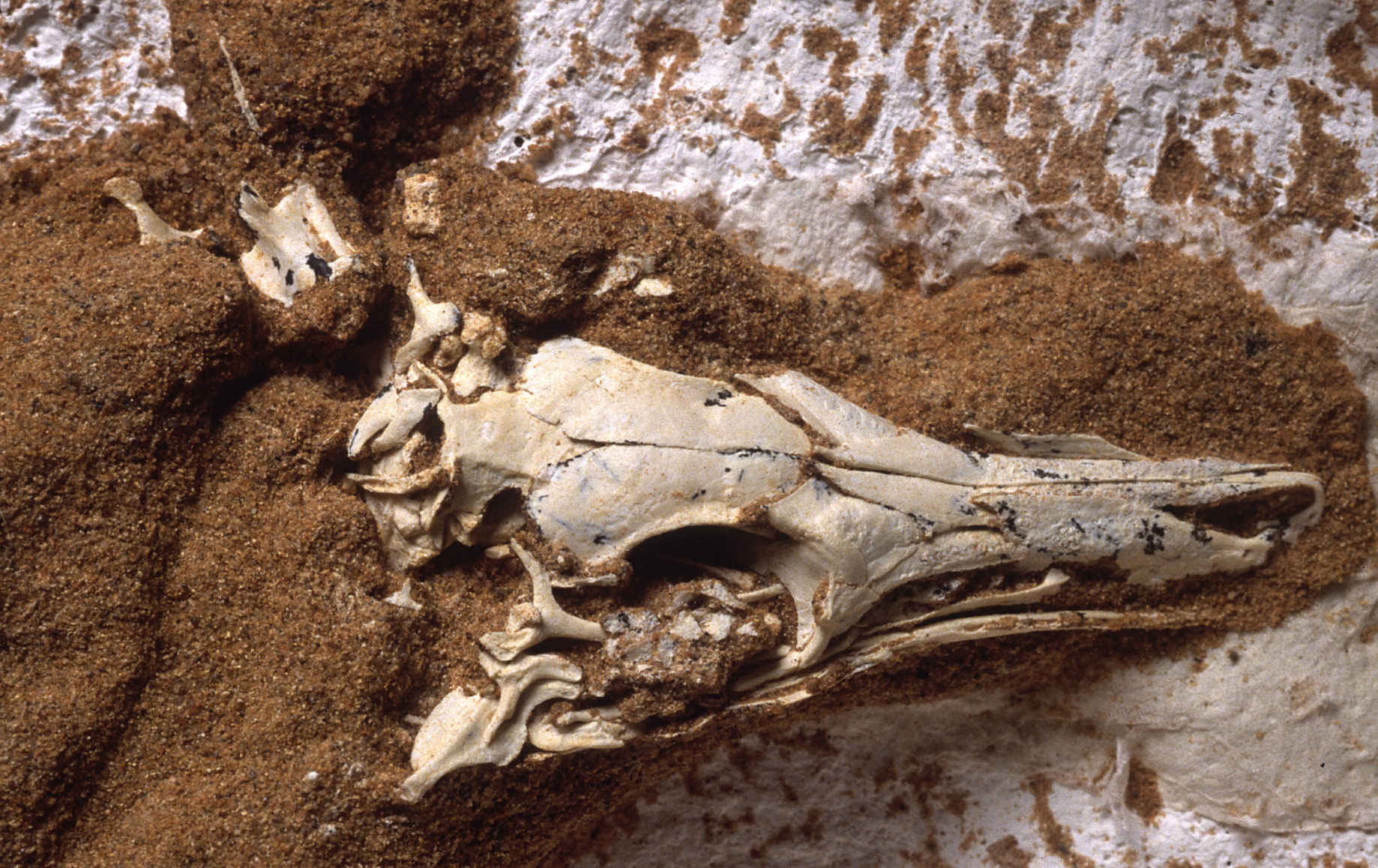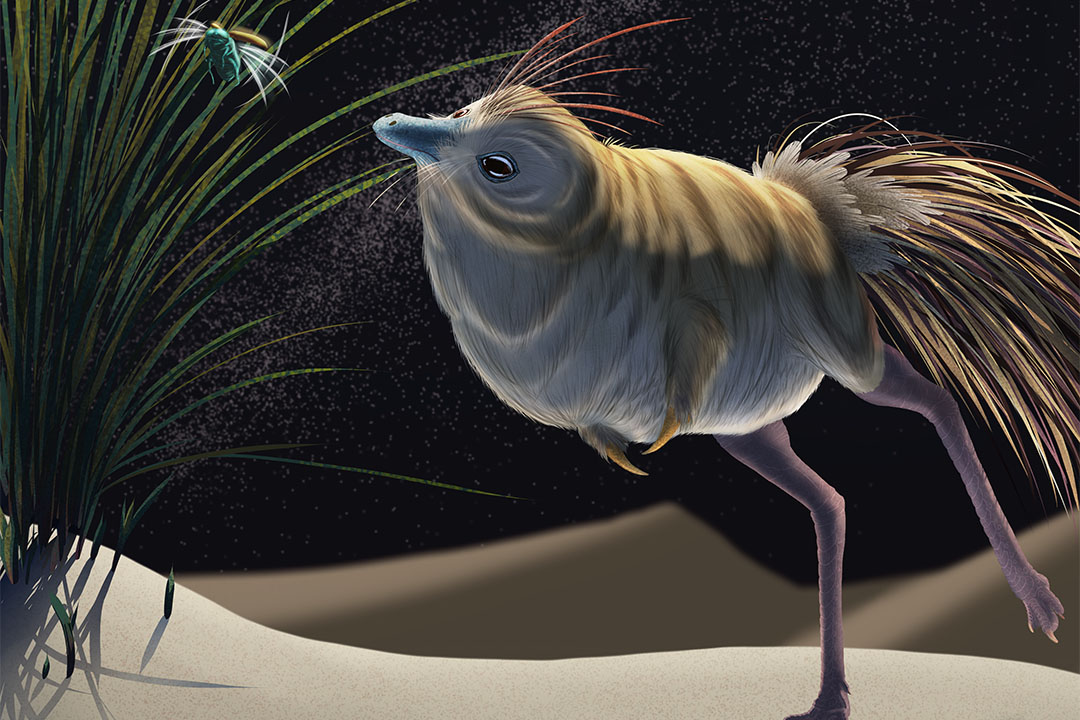By John DiConsiglio
Today’s 10,000 species of birds live in virtually every habitat on Earth, but only a handful have adaptations enabling them to hunt active prey in the dark of night. Scientists have long wondered whether theropod dinosaurs—the group that gave rise to modern birds—had similar sensory adaptations.
Now an international team of researchers, including Ronald Weintraub Professor of Biology James Clark from GW’s Columbian College of Arts and Sciences, are investigating how the vision and hearing abilities of dinosaurs compared to modern birds. The scientists used CT scanning and detailed measurements to collect information on the relative size of the eyes and inner ears of nearly 100 living bird and extinct dinosaur species.
In a new study published in the journal “Science,” the researchers explained that while many dinosaur species were suited for daytime hunting, a small theropod called Shuvuuia had extraordinary hearing and night vision that may have allowed it to hunt in complete darkness.
The study was co-lead and authored by Jonah Choiniere, Ph.D. ’10, an associate professor at the University of the Witwatersrand in South Africa and Dr. Clark’s former Ph.D. student at GW.
Shuvuuia are members of a group of dinosaurs called alvarezsaurs that share many characteristics with birds. Their bodies are slender with bird-like skulls and small teeth. Dr. Clark collected one of the two Mongolian Shuvuuia skulls in the study while his team collected the skull of the earliest known alvarezsaur, Haplocheirus, from the Gobi Desert of China. Dr. Clark has been studying alvarezsaurs since co-describing the first of the most specialized forms, Mononykus, in 1993, a discovery that appeared on the cover of Time magazine.

Partial skeleton with skull of fossil Shuvuuia from Mongolia. (Credit: Mick Ellison, American Museum of Natural History, Fossil Amphibians, Reptiles, and Birds.)
To assess the dinosaurs’ hearing, the team measured the length of the lagena, the organ that processes incoming sound information, called the cochlea in mammals. The barn owl, which can hunt in complete darkness using hearing alone, has the proportionally longest lagena of any bird.
To assess vision, the team looked at the scleral ring, a series of bones surrounding the pupil, of each species. Like a camera lens, the larger the pupil can open, the more light can get in, enabling better vision at night. By measuring the diameter of the ring, the scientists could tell how much light the eye could gather.
The team found that many carnivorous theropods such as Tyrannosaurus and Dromaeosaurus had vision optimized for the daytime, and better-than-average hearing presumably to aid in hunting. However, the diminutive Shuvuuia had both extraordinary hearing and night vision. The extremely large lagena of this species is almost identical in relative size to today’s barn owl, suggesting that Shuvuuia could have hunted in darkness.
The large lagena of Shuvuuia came as a surprise discovery to James Neenan, a paleontologist with the Oxford University Museum of Natural History and joint first author on the "Science" study. “As I was digitally reconstructing the Shuvuuia skull, I couldn’t believe the lagena size,” he said. Dr. Neenan, a former postdoctoral researcher for Dr. Choiniere’s University of the Witwatersrand lab, contacted Dr. Choiniere to confirm his findings. “We both thought it might be a mistake, so I processed the other ear. Only then did we realize what a cool discovery we had on our hands!”
Dr. Choiniere remembered thinking he could not believe was he was seeing. “Dinosaur ears weren’t supposed to look like that,” he said.
The eyes of Shuvuuia also had some of the proportionally largest pupils yet measured in birds or dinosaurs, suggesting that they could likely see well at night.
Shuvuuia was about the size of a chicken and lived in the deserts of what is now Mongolia. Its bizarre skeleton—with a fragile skull, brawny arms, a single claw on each hand and long roadrunner-like legs—has baffled scientists since its discovery in the 1990s. With the new data on Shuvuuia’s senses, the scientific team hypothesized that, like many desert animals, Shuvuuia foraged at night, using its hearing and vision to find small mammals and insects. Its long legs allowed it to rapidly chase its prey and pry them from burrows or shrubby vegetation with its strong forelimbs.
“Nocturnal activity, digging ability and long hind limbs are all features of animals that live in deserts today,” said co-author Dr. Roger Benson, a professor of paleobiology at the University of Oxford, “but it’s surprising to see them all combined in a single dinosaur species that lived more than 65 million years ago.”
Dr. Clark said the animals continue to surprise the researchers. “There are many things we have yet to learn about how they lived,” he said. “How did they use their muscular forelimbs, mouthful of tiny teeth and sensitive hearing to feed? What exactly were they eating? Hopefully we will be able to answer some of these questions with new specimens and techniques.”


